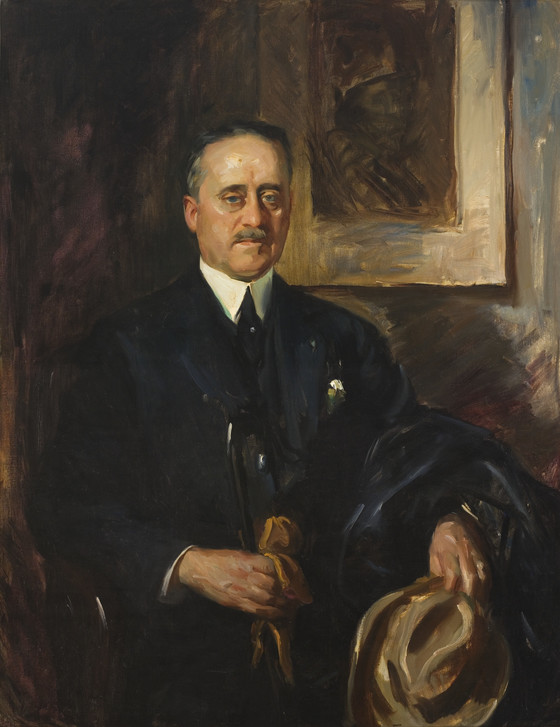William Preston Harrison (1869-1940) was the pioneer collector of American art in Los Angeles, and his collection, given to the Los Angeles Museum during the 1920s and 1930s, formed the basis of its e...
William Preston Harrison (1869-1940) was the pioneer collector of American art in Los Angeles, and his collection, given to the Los Angeles Museum during the 1920s and 1930s, formed the basis of its early holdings. He was also an important collector of French art.
Son of Carter H. Harrison, five-time mayor of Chicago, and brother of Carter Harrison, also a Chicago mayor, Preston Harrison came to Los Angeles in 1918 after having been involved in the family’s real estate ventures and serving as editor and publisher of the Chicago Times. He settled in Los Angeles with his wife, Ada Sanberg Harrison (see entry under ROBERT HENRI), and although he lived on the West Coast until his death, he maintained close ties with the Midwest. As did his brother in Chicago, Preston Harrison became involved in local cultural affairs: he served on the board of governors of the Los Angeles Museum (at the time of his death he was vice-president of the board) and was active in the Los Angeles Art Association and the Friends of Art of the Huntington Library.
From its inception this portrait was intended for presentation to the museum, and it hung in the Harrison Room along with other paintings donated by the Harrisons. The portrait was painted in New York in June 1924. Typical of Adams’s painting method, it was completed in one day. Adams delineated the figure with long, sure strokes and the background with equally broad brushwork. Such rapid execution is characteristic of a student of Chase and Henri, and Henri may have suggested to Harrison that Adams be the one to paint his portrait.
Adams portrayed Harrison with dignity, befitting his station. Harrison’s importance as a major patron of the arts is alluded to by the inclusion of a portrait of a crowned figure hanging on the wall behind him. Harrison wears a dark blue business suit and in his hands are a pair of gloves, a cane, and a hat. Every aspect of the painting evokes respectability and decorum. Adams was a master of facial characterization, and he presented Harrison as a generous, elderly man.
Although admired by artists, the portrait received some criticism locally. The attacks by Los Angeles society were probably due mostly to jealousy over the portrait’s installation in a public museum, but even Harrison thought that the painting might be called "Old Grouchy."
More...
